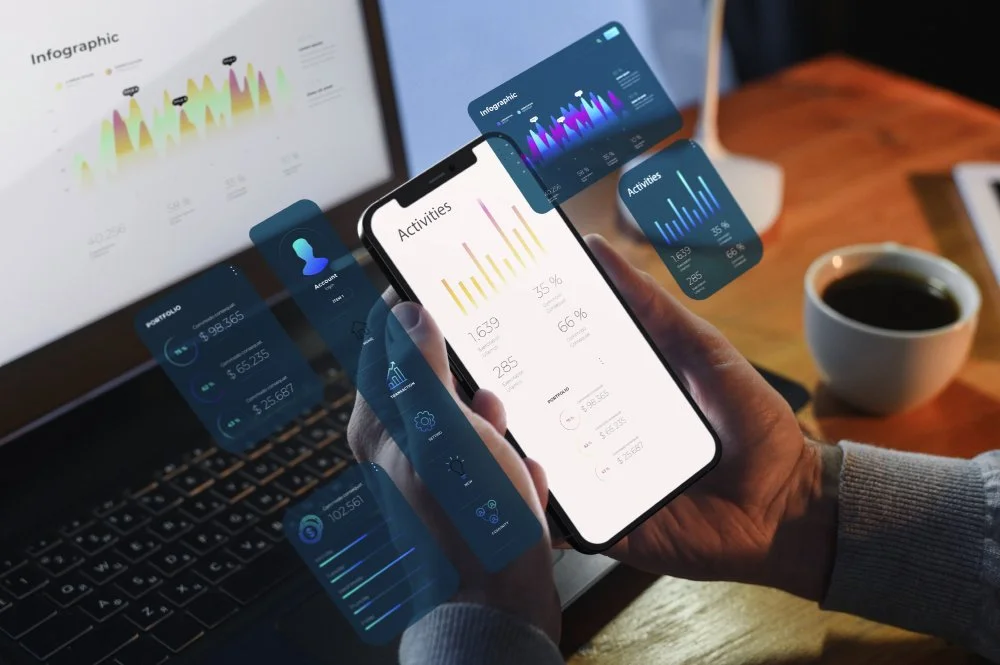Mobile applications have become an integral part of business strategies, providing a direct channel for companies to engage with their customers. However, the cost associated with mobile app development varies widely and depends on several crucial factors. As we step into 2024, understanding these factors is essential for businesses looking to embark on a mobile app development journey.
This comprehensive guide aims to answer that question, providing detailed insights into factors affecting app development costs, and strategies to optimize expenses.
Top 10 factors that significantly impact the cost of mobile app development in 2024.
To decipher the financial intricacies of app development, one must delve into the core factors that shape these costs.
Features & Functionality
The complexity and depth of features play a pivotal role in determining the overall development cost. Apps with intricate and advanced functionalities often require more resources and time for development. It's essential to carefully prioritize features based on the core objectives of your app, considering additional functionalities for future updates.
Platform Selection (iOS vs. Android vs. Flutter Cross-Platform)
Choosing the right platform(s) for your app is a critical decision. Native app development for iOS and Android might involve separate coding, leading to increased costs. Alternatively, cross-platform frameworks like Flutter can offer code reusability, reducing development time and expenses.
Design and User Experience (UI/UX)
A well-designed and user-friendly interface is paramount for app success. Investing in a top-notch UI/UX design can enhance user satisfaction but may also incur higher design costs. Striking a balance between design quality and cost efficiency is key for creating a compelling user experience.
Third-Party Integrations
Integrating third-party services, such as payment gateways or social media logins, can impact costs. It's essential to evaluate the necessity of each integration and its contribution to the user experience. While integrations enhance functionality, they can increase development complexity and expenses.
Security Considerations
As cyber threats evolve, ensuring the security of your app becomes more crucial. Implementing robust security measures may require additional development time and resources. Balancing security needs with cost considerations is vital for delivering a secure yet cost-effective solution.
Testing and Quality Assurance
Thorough testing is essential to identify and rectify bugs and issues. Quality Assurance (QA) processes contribute to a smooth user experience by testing on various devices and platforms. Allocating sufficient resources to testing helps prevent post-launch problems and potentially higher costs.
Development Team Experience & Location
The experience and expertise of your development team directly influence costs. Highly skilled developers may charge higher rates but can deliver more efficiently. Additionally, the location of your development team matters, with rates varying globally. Balancing expertise and budget constraints is essential.
Infrastructure Costs
The underlying infrastructure supporting your app, including server costs, cloud services, and database expenses, contributes to overall development costs. Understanding the scalability needs of your app can help optimize infrastructure costs.
Marketing and Promotion
Launching a successful app involves marketing and promotion. Allocating the budget for marketing strategies, app store optimization, and promotional activities impacts the overall cost. An effective marketing plan ensures that your app reaches the target audience and gains traction.
App Maintenance
Post-launch maintenance is often overlooked but is a critical aspect of app development. Regular updates, bug fixes, and feature enhancements contribute to long-term success. Budgeting for ongoing maintenance helps in managing post-launch costs effectively.
In 2024, mobile app development continues to be a dynamic and evolving field. Understanding the factors that impact development costs is crucial for businesses to make informed decisions and allocate resources effectively.
By carefully considering these factors and finding the right balance between features, quality, and cost, businesses can navigate the mobile app development landscape successfully.
How to Reduce the App Development Cost?
Reducing app development costs without compromising quality is a common goal for businesses. Here are some tips to help achieve cost savings in the app development process.
Clear Project Scope
Clearly define the project scope, features, and functionalities from the beginning. Changes in requirements during development can lead to increased costs and delays.
Prioritize Features
Identify and prioritize essential features for the initial release. You can always add more features in later updates. This approach helps in reducing the time and cost of the initial development phase.
Choose the Right Development Approach
Depending on your needs, consider hybrid or cross-platform development frameworks. These approaches allow for code reusability across different platforms, potentially reducing development time and costs.
Outsourcing
Consider outsourcing development tasks to regions with lower development costs. Development agencies from such regions can offer competitive rates while maintaining quality.
Open Source Technologies
Leverage open-source technologies and frameworks to reduce licensing costs. Open-source tools often have a large community support, providing cost-effective solutions.
Prototype and MVP Development
Start with a minimum viable product (MVP) to test the market. This approach allows you to gather feedback, validate ideas, and avoid unnecessary expenses on features that may not be crucial.
Agile Development Methodology
Implement an agile development methodology to foster collaboration, flexibility, and responsiveness to changes. This can lead to more efficient development processes and better cost management.
Reusable Components
Use pre-built or reusable components and libraries. This can save development time and costs by avoiding the need to build certain functionalities from scratch.
Optimize Design and UX
Streamline the design process to avoid unnecessary complexities. A well-designed, user-friendly app can lead to higher user satisfaction and reduce the need for extensive post-launch modifications.
Continuous Testing
Implement continuous testing throughout the development process to identify and fix issues early on. This helps prevent costly rework and ensures a smoother development flow.
Effective Communication
Maintain clear and constant communication between the development team and stakeholders. Miscommunications can lead to errors and rework, increasing costs.
App Maintenance Planning
Plan for ongoing maintenance costs from the beginning. Regular updates and bug fixes are essential for a successful app, and budgeting for maintenance avoids unexpected expenses.
By incorporating these strategies, businesses can navigate the challenges of app development costs in 2024 and deliver successful mobile applications within budget constraints.




